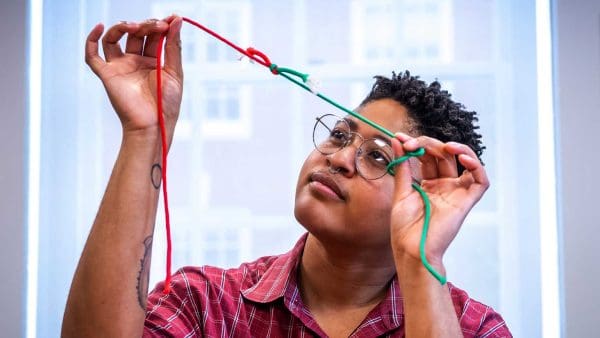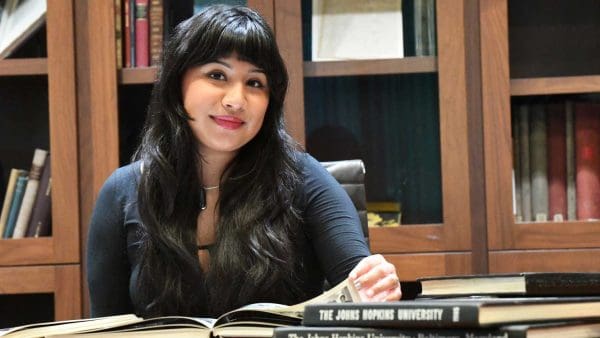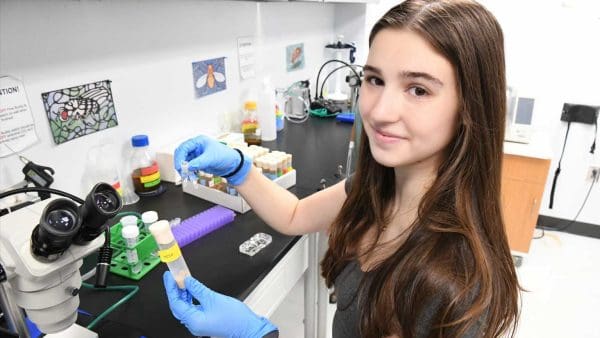Undergraduate researchers should always be motivated by the accomplishments of their mentoring professors and lab leaders. But when it comes to setting the aspirational bar at the highest notch, it’s hard to top School of Medicine Professor Gregg Semenza. In 2019, the year senior biophysics major Chelsey Chen began working in Semenza’s lab, he and colleagues from Harvard and Oxford universities won the Nobel Prize in physiology or medicine.

[Photo: Will Kirk]
“He passed it around the lab and let me let me hold it, which was really amazing,” Chen says of the gold medal that is part of the award. And medicine and science are the real winners. Semenza’s breakthrough discovery on how cells respond to low oxygen levels offers enormous potential for developing treatments for a variety of diseases, including cancer.
Semenza discovered a protein called hypoxia-inducible factor 1 (HIF-1). The protein turns genes on and off in cells in response to low oxygen levels. Much of Semenza’s lab work now revolves around understanding how HIF-1 might promote breast cancer metastasis.
Cancerous tumor cells can divide very quickly, consuming a lot of oxygen, but tumors usually have irregular or insufficient vasculature. “So, that creates these pockets of hypoxia—low oxygen—and that’s where HIF-1 comes into play,” Chen says.
Protein and Breast Cancer
In normal cells, low oxygen triggers HIF-1 to promote the expression of various target genes. The genes impact blood vessel formation, red blood cell production, and stem cell maintenance, among other processes. Hypoxic cancer cells, however, take advantage of the HIF-1 pathways to promote cell survival, migration, and a stem-like cell population. “These cancer stem cells sustain the cancer and can disseminate to different parts of the body, which can contribute to metastasis,” she says.
In January, Chen won a Provost’s Undergraduate Research Award. She’s studying how HIF-1 interacts with a little-understood protein called nuclear prelamin A recognition factor (NARF) in breast cancer. Previous studies have shown that NARF expression is induced by hypoxia. They’ve also found it likely plays a role in the enrichment of breast cancer stem cells. Part of her research, she explains, involves “knocking down the NARF gene, exposing cells to either normal oxygen conditions or hypoxia, and testing the effect on stem cell marker expression.”
Chen, who also wants to give a shout-out of thanks to her postdoctoral mentor, Yongkang Yang, is motivated more than ever to pursue molecular oncology. “We have the potential to help so many people through this work,” she says. “There’s still so much to learn. My work in the lab inspires me to pursue an MD-PhD to continue doing basic science research in the future.”




